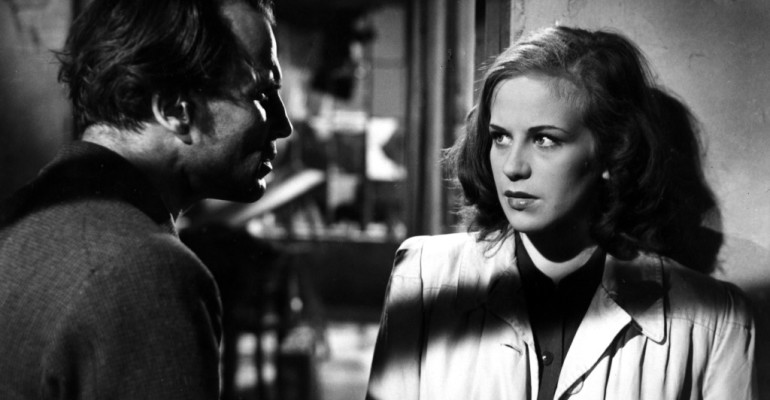 The Murderers Are Among Us
The Murderers Are Among Us, 1946
Susanne (Hildegard Knef) returns to a ruined Berlin in the wake of the end of World War Two. Having spent time in a concentration camp, she is stunned to find that a strange man named Hans (Wilhelm Borchert) is living in her apartment. Despite his claims that the apartment is now his, she declares that she’s moving back in, and the two fall into an uneasy companionship. But Hans is working through some serious emotional damage from his experiences as a German medical officer during the war, and Susanne makes a discovery that forces Hans to confront the traumatic past that’s left him addicted to alcohol and unable to function in a medical setting.
The first German film made after WW2, this film is a fascinating and compelling look at a society grappling with guilt and trauma.
I have had this movie on my to-see list for years, and it did not disappoint! On every level I found it an engaging, empathetic portrait of individuals and a society in distress.
The look of the movie is really great. It took me a little while to realize what it reminded me of, and the answer finally came to me:
The Cranes Are Flying. Lots of dramatic angles and a use of dark and light that is really emotionally evocative. The film makes great use of different spaces. When the characters leave their homes, it’s always a bit of a shock to see just how destroyed their surroundings are. Any casual walk involves traversing streets covered in rubble. The apartment itself serves to show how the two characters are coping. Susanne immediately sets about cleaning and scrubbing, as if she can erase what came before. Hans, on the other hand, seems to want to bury himself--in drunkenness or literally in junk. As the characters try to get their bearings, they are constantly reminded by their surroundings about everything that happened and just how much work it will take to get back to normal.
The characters are also well-realized. Susanne maybe gets the least character development of the two. She doesn’t talk much about what she’s seen or been through. Hans gets the most character development, and it’s really interesting. While most portrayals of men with PTSD seem to focus on anger and violence, Hans fits into a different slot. He is a man who is clearly distraught and it feels incredibly real. When he has his first confrontation with Susanne and gets frustrated with her, he nearly bursts into tears in his overwhelmed state. It takes the full length of the film to learn the entire scope of what Hans experienced during the war, but it makes sense once we get the whole picture why he is such a mess emotionally.
There are also strong supporting characters. There’s a man who has a shop for repairing eyeglasses. He waits, in hope, for word of his son who was a German soldier and is currently missing. On the flip side, we meet an old military commander who served with Hans, a man who has cheerfully gone back to work in the industrial sector and seems to have no sense of guilt or regret about his participation in the war.
From a thematic point of view, I loved what this film was exploring. How can anyone with a conscience survive participating, even indirectly, in a genocide and come out the other side and live a life? Where is the dividing line between Germans who must be punished for their actions, and those who can/should be allowed to go back to living some kind of normal life? It’s a really complicated question, and for the most part the film doesn’t act as if it’s easy to untangle. In the end it maybe settles for a certainty that is a bit convenient, but overall it acknowledges that this is a messy situation, and that the people inside of that situation are grappling with various degrees of guilt, trauma, regret, and loss.
On the whole, I found this to be a powerful, memorable film with a fascinating historical context.




